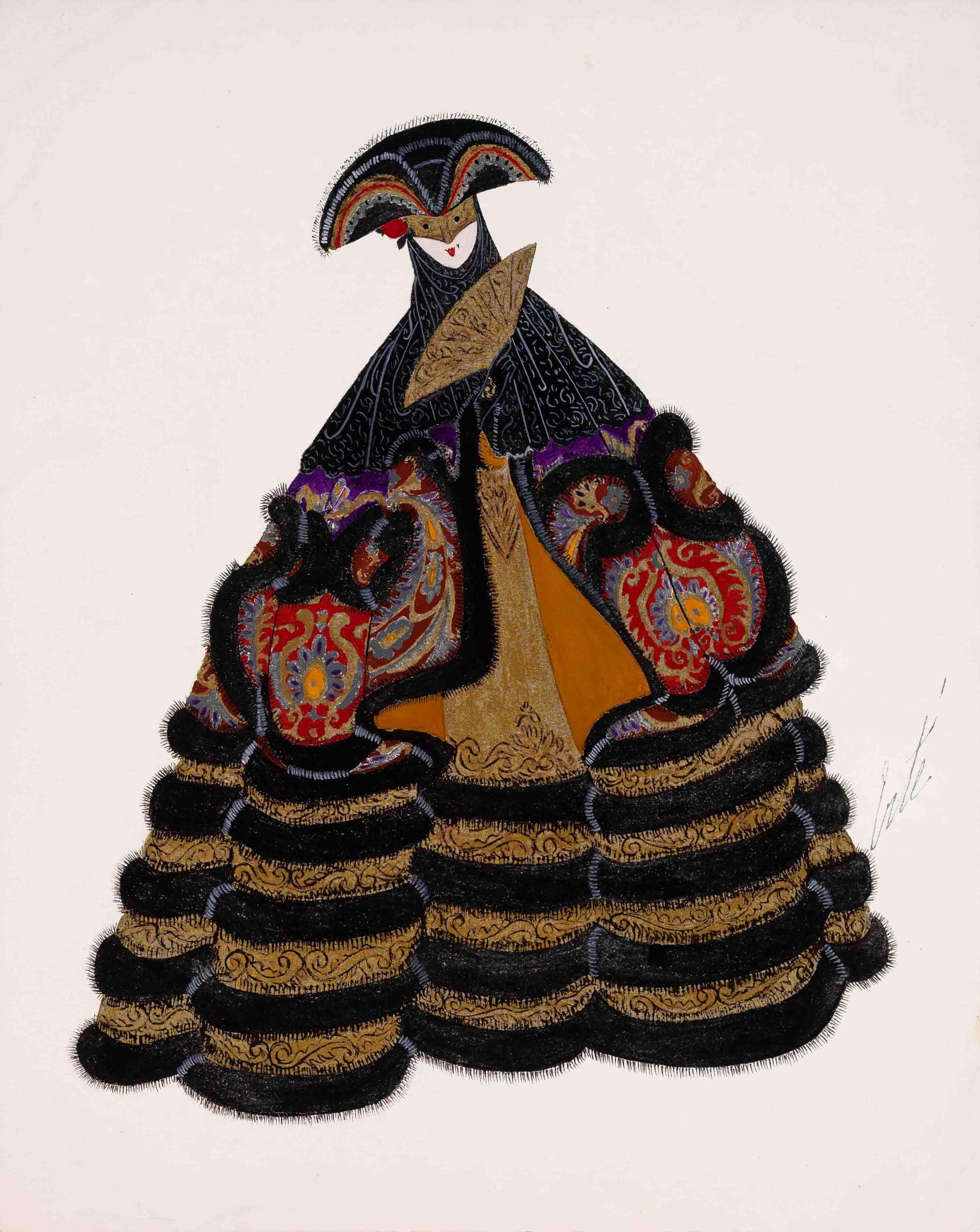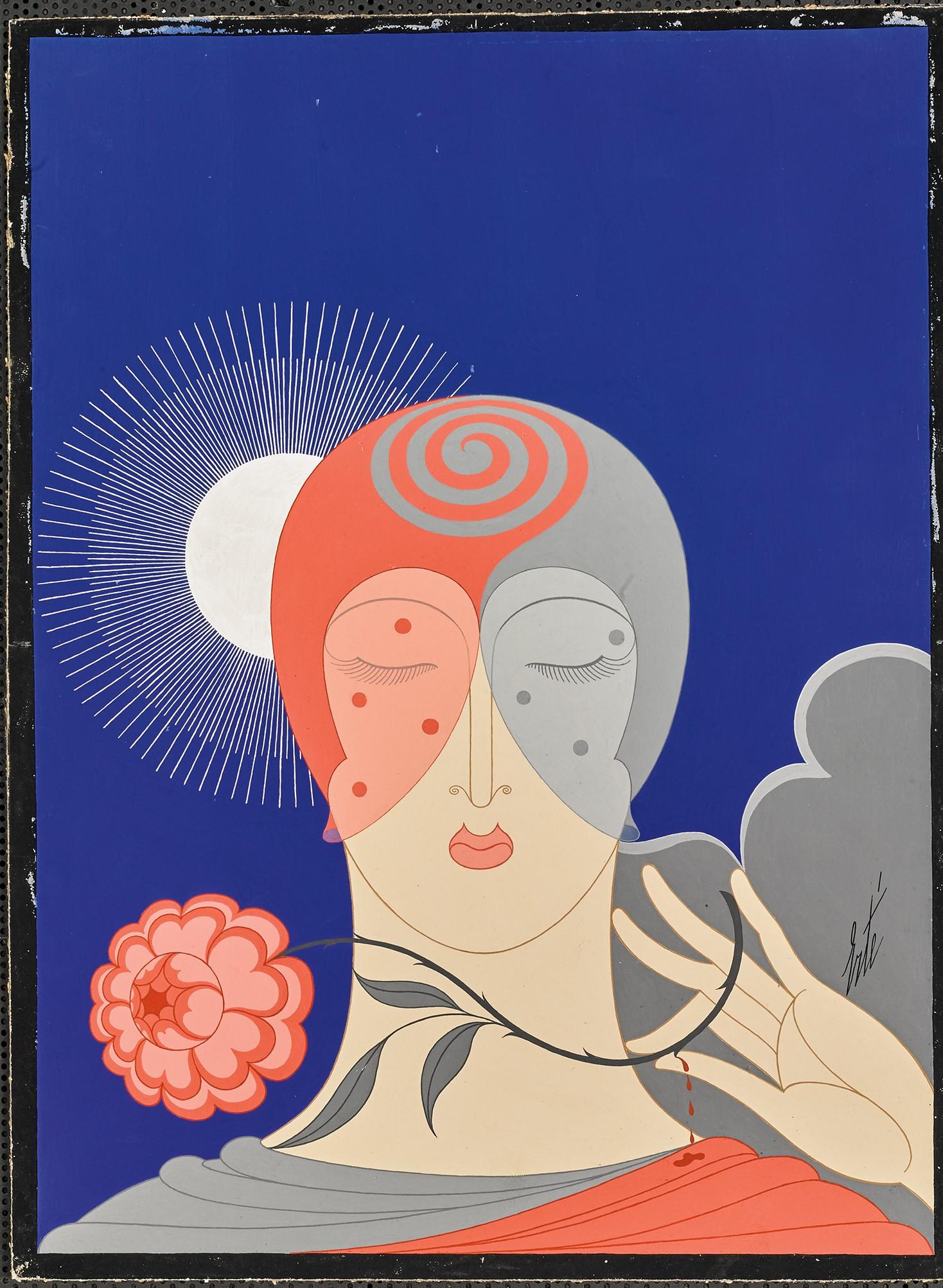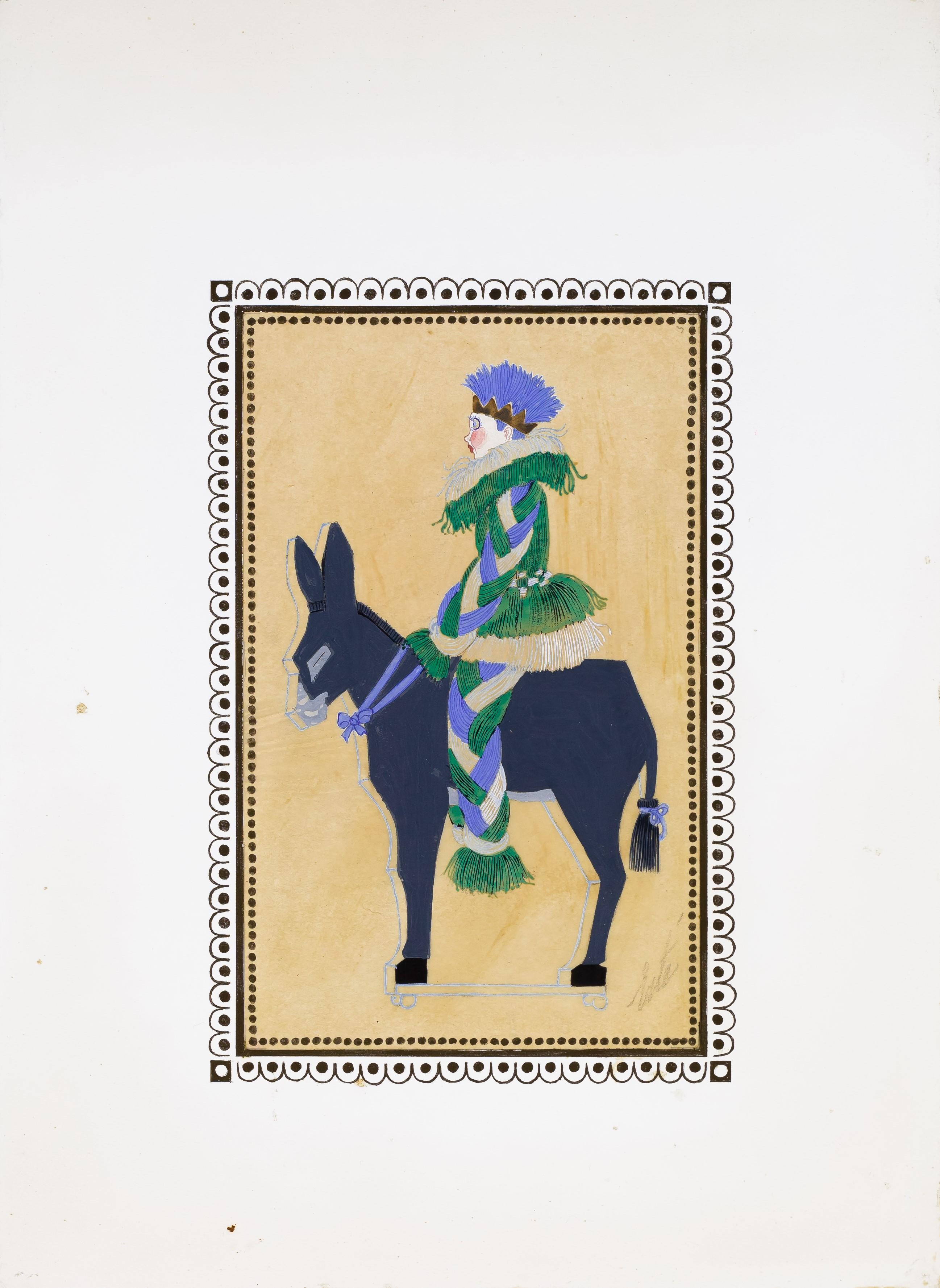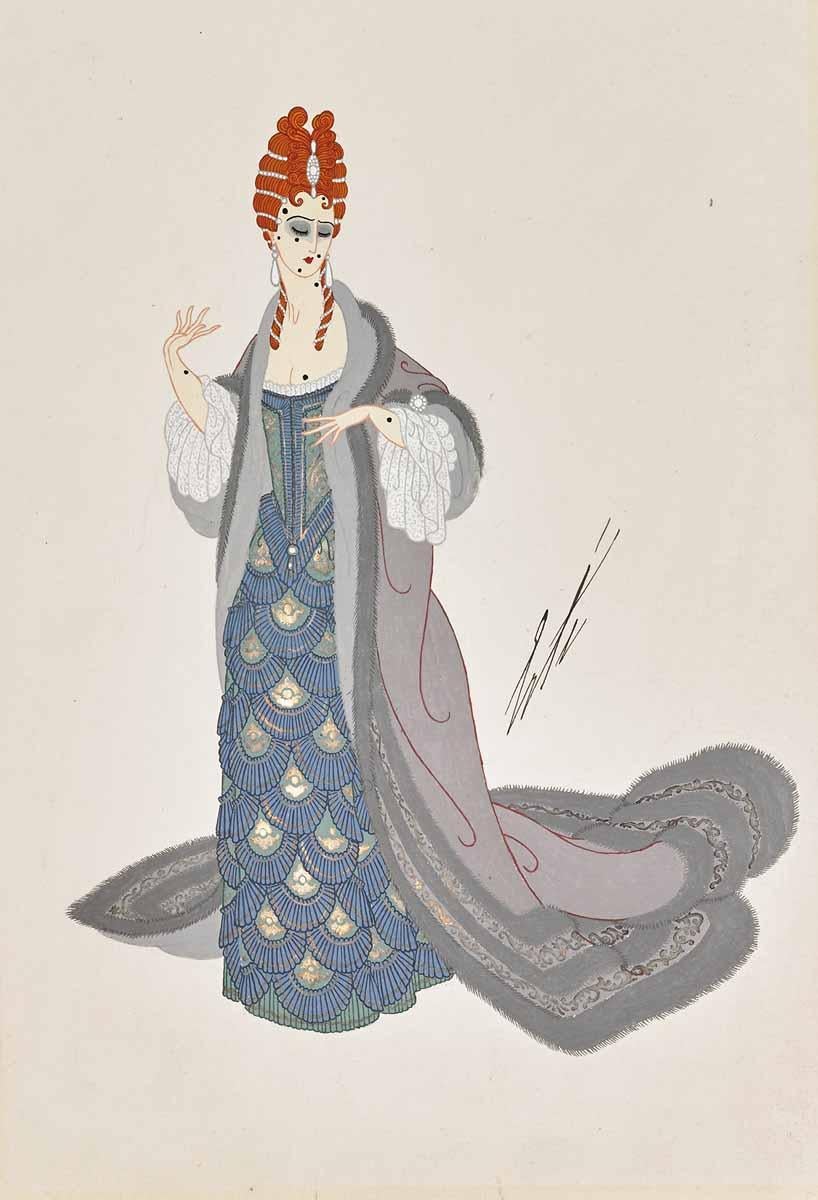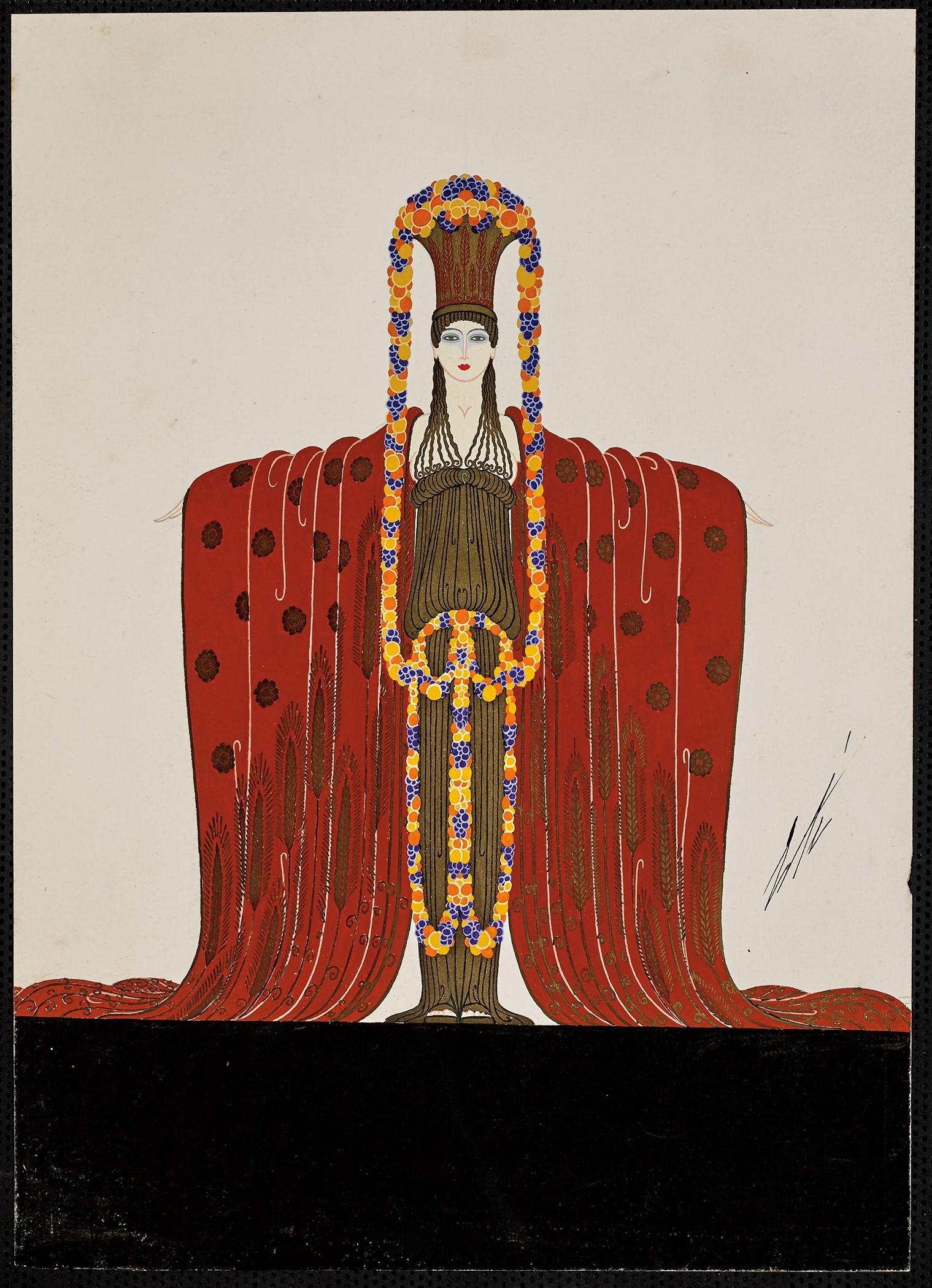Items Similar to Art Deco Spanish Woman Fashion Illustration
Want more images or videos?
Request additional images or videos from the seller
1 of 7
UnknownArt Deco Spanish Woman Fashion Illustrationca. 1920s
ca. 1920s
About the Item
Elegant and glamorous fashion illustration from the 1920's,
Original signed gouache painting on paper.
Monogrammed V.S. lower right.
Site: 10"x 7.75" Frame: 19.25"x 17"
- Creation Year:ca. 1920s
- Dimensions:Height: 19.25 in (48.9 cm)Width: 17 in (43.18 cm)Depth: 1 in (2.54 cm)
- Medium:
- Movement & Style:
- Period:
- Condition:
- Gallery Location:Wilton Manors, FL
- Reference Number:1stDibs: LU245214219952
About the Seller
4.9
Vetted Seller
These experienced sellers undergo a comprehensive evaluation by our team of in-house experts.
Established in 2007
1stDibs seller since 2015
322 sales on 1stDibs
Typical response time: 5 hours
- ShippingRetrieving quote...Ships From: Wilton Manors, FL
- Return PolicyA return for this item may be initiated within 7 days of delivery.
More From This SellerView All
- Life Magazine Art Deco Showgirls CartoonLocated in Wilton Manors, FLBarbara Shermund (1899-1978). Showgirls Cartoon for Life Magazine, 1934. Ink, watercolor and gouache on heavy illustration paper, matting window measures 16.5 x 13 inches; sheet measures 19 x 15 inches; Matting panel measures 20 x 23 inches. Signed lower right. Very good condition with discoloration and toning in margins. Unframed. Provenance: Ethel Maud Mott Herman, artist (1883-1984), West Orange NJ. For two decades, she drew almost 600 cartoons for The New Yorker with female characters that commented on life with wit, intelligence and irony. In the mid-1920s, Harold Ross, the founder of a new magazine called The New Yorker, was looking for cartoonists who could create sardonic, highbrow illustrations accompanied by witty captions that would function as social critiques. He found that talent in Barbara Shermund. For about two decades, until the 1940s, Shermund helped Ross and his first art editor, Rea Irvin, realize their vision by contributing almost 600 cartoons and sassy captions with a fresh, feminist voice. Her cartoons commented on life with wit, intelligence and irony, using female characters who critiqued the patriarchy and celebrated speakeasies, cafes, spunky women and leisure. They spoke directly to flapper women of the era who defied convention with a new sense of political, social and economic independence. “Shermund’s women spoke their minds about sex, marriage and society; smoked cigarettes and drank; and poked fun at everything in an era when it was not common to see young women doing so,” Caitlin A. McGurk wrote in 2020 for the Art Students League. In one Shermund cartoon, published in The New Yorker in 1928, two forlorn women sit and chat on couches. “Yeah,” one says, “I guess the best thing to do is to just get married and forget about love.” “While for many, the idea of a New Yorker cartoon conjures a highbrow, dry non sequitur — often more alienating than familiar — Shermund’s cartoons are the antithesis,” wrote McGurk, who is an associate curator and assistant professor at Ohio State University’s Billy Ireland Cartoon Library & Museum. “They are about human nature, relationships, youth and age.” (McGurk is writing a book about Shermund. And yet by the 1940s and ’50s, as America’s postwar focus shifted to domestic life, Shermund’s feminist voice and cool critique of society fell out of vogue. Her last cartoon appeared in The New Yorker in 1944, and much of her life and career after that remains unclear. No major newspaper wrote about her death in 1978 — The New York Times was on strike then, along with The Daily News and The New York Post — and her ashes sat in a New Jersey funeral home...Category
1930s Art Deco Figurative Paintings
MaterialsInk, Gouache
- Same Old Story (Brooklyn Dodgers & St. Louis Cardinals Illustration)Located in Wilton Manors, FLBill Crawford (1913-1982). Original illustration artwork depicting teams as they advance to the World Series. Depicted are representations of the St. Louis Cardinals and The Brooklyn...Category
1940s Realist Figurative Paintings
MaterialsPaper, Charcoal, Ink, Gouache, Pencil
- Vintage Esquire Magazine cartoonLocated in Wilton Manors, FLBarbara Shermund (1899-1978). Esquire Magazine Cartoon, 1951. Ink, watercolor and gouache on heavy illustration paper, image measures 9.5 x 14.5 inches; matting measures 15.5 x 21 inches. Matting board is in poor condition. Signed lower center. Painting is in very good condition. Unframed. Provenance: Ethel Maud Mott Herman, artist (1883-1984), West Orange NJ. For two decades, she drew almost 600 cartoons for The New Yorker with female characters that commented on life with wit, intelligence and irony. In the mid-1920s, Harold Ross, the founder of a new magazine called The New Yorker, was looking for cartoonists who could create sardonic, highbrow illustrations accompanied by witty captions that would function as social critiques. He found that talent in Barbara Shermund. For about two decades, until the 1940s, Shermund helped Ross and his first art editor, Rea Irvin, realize their vision by contributing almost 600 cartoons and sassy captions with a fresh, feminist voice. Her cartoons commented on life with wit, intelligence and irony, using female characters who critiqued the patriarchy and celebrated speakeasies, cafes, spunky women and leisure. They spoke directly to flapper women of the era who defied convention with a new sense of political, social and economic independence. “Shermund’s women spoke their minds about sex, marriage and society; smoked cigarettes and drank; and poked fun at everything in an era when it was not common to see young women doing so,” Caitlin A. McGurk wrote in 2020 for the Art Students League. In one Shermund cartoon, published in The New Yorker in 1928, two forlorn women sit and chat on couches. “Yeah,” one says, “I guess the best thing to do is to just get married and forget about love.” “While for many, the idea of a New Yorker cartoon conjures a highbrow, dry non sequitur — often more alienating than familiar — Shermund’s cartoons are the antithesis,” wrote McGurk, who is an associate curator and assistant professor at Ohio State University’s Billy Ireland Cartoon Library & Museum. “They are about human nature, relationships, youth and age.” (McGurk is writing a book about Shermund. And yet by the 1940s and ’50s, as America’s postwar focus shifted to domestic life, Shermund’s feminist voice and cool critique of society fell out of vogue. Her last cartoon appeared in The New Yorker in 1944, and much of her life and career after that remains unclear. No major newspaper wrote about her death in 1978 — The New York Times was on strike then, along with The Daily News and The New York Post — and her ashes sat in a New Jersey funeral home...Category
1950s Realist Figurative Paintings
MaterialsWatercolor, Gouache
- Sailors at Cafe du GlobeBy Charles RocherLocated in Wilton Manors, FLCharles Rocher (1890-1962. Sailors, ca. 1920s. Gouache on paper. Sheet measures 19 x 25 inches. Considerable damage and loss as depicted. Signed lower left.Category
1920s Realist Figurative Paintings
MaterialsGouache
- Mother and ChildLocated in Wilton Manors, FLBeautiful original painting by French artist, Alexandre de Valentini (1787-1887). Pencil and gouache on paper, 14 x 18.5 inches; 19 x 23.5 inches matted. Signed and dated with Paris...Category
Mid-19th Century Academic Interior Paintings
MaterialsPencil, Gouache
- Coronel Retirado y Su Amante Esposa (Cuban Artist)By Felipe OrlandoLocated in Wilton Manors, FLFelipe Orlando (Cuban-Mexican, 1911-2001). Coronel Retirado y su Amante Esposa, ca. 1970. Ink and gouache on paper with heavily built up layers of textured ground. Measures 13 1/4 x 18 3/8 inches. Signed lower left. Original label affixed on verso. Excellent condition. Unframed. An anthropologist as well as a painter and engraver, Orlando, whose full name was Felipe Orlando Garcia Murciano, studied at the University of Havana and at the painting workshop of Jorge Arche and Víctor Manuel. He was a founding member of the Asociación de Pintores y Escultores de Cuba (APEC) and a professor at the Universidad de las Américas and the Universidad Nacional Autónoma de México, both in Mexico City. His style is influenced by the Afro-Cuban movement and pre-columbian art...Category
1970s Abstract Abstract Paintings
MaterialsInk, Gouache
You May Also Like
- Untitled Fashion Design, 1920By ErtéLocated in Greenwich, CTUntitled (Fashion Design) was created for Harper's Bazar and appeared in the February, 1920 edition of the magazine. This is a gouache painting on tissue paper measuring approximately 10 x 6.5 inches and framed in a custom, closed-corner Art Deco...Category
20th Century Art Deco Paintings
MaterialsGouache, Paper
- Troisemmè Dame, 1919By ErtéLocated in Greenwich, CTTroisemmè Dame from 1919 is a gouache painting on paper, 12 x 9.5 inches, framed in a custom, closed-corner, Art Deco frame to 20.25 x 18 inches. Signed recto 'Erté' mid lower right ...Category
20th Century Art Deco Paintings
MaterialsGouache, Paper
- Optimism and Pessimism, 1927 (Harper's Bazar Cover - May 1929)By ErtéLocated in Greenwich, CTOptimism and Pessimism, created in 1927, was the cover design for Harper's Bazar in May 1929. This is a gouache painting on board, signed recto 'Erté' lower right in the image, and f...Category
20th Century Art Deco Paintings
MaterialsGouache, Paper
- Le Roi Yvetot, 1919 (no. 227)By ErtéLocated in Greenwich, CTLe Roi Yvetot (no. 227) from 1919 is a gouache painting on tissue paper mounted on board. The image size is 9.25 x 6 inches, framed in a gold-tone frame, 22.5 x 19 inches. Signed recto 'Erté' lower right, in the image and annotated verso, 'Les Rois des Lègendes, No 8, Le Roi Yvetot 227'. Erte name and 'Composition originale' stamps verso. Le Roi Yvetot is a design by Erte for the 1919 theater production of Les Rois des Lègendes. The King of Yvetot William Makepeace Thackeray: 1811 –1863 There was a king of Yvetot, Of whom renown hath little said, Who let all thoughts of glory go, And dawdled half his days a-bed; And every night, as night came round, By Jenny, with a nightcap crowned, Slept very sound: Sing ho, ho, ho! and he, he, he! That's the kind of king for me. And every day it came to pass, That four lusty meals made he; And, step by step, upon an ass, Rode abroad, his realms to see; And wherever he did stir, What think you was his escort, sir? Why, an old cur. Sing ho, ho, ho! and he, he, he! If e'er he went into excess, 'Twas from a somewhat lively thirst; But he who would his subjects bless, Odd's fish!—must wet his whistle first; And sofrom every cask they got, Our king did to himself allot, At least a pot. Sing ho, ho, ho! and he, he, he! To all the ladies of the land, A courteous king, and kind, was he; The reason why you'll understand, They named him Pater Patriae. Each year he called his fighting men, And marched a...Category
20th Century Art Deco Paintings
MaterialsGouache, Paper
- Martha, Act I (Chicago Opera), 1925By ErtéLocated in Greenwich, CTMartha, Act I (Chicago Opera) from 1925 is a gouache on paper measuring approximately 9 x 7 inches and framed in a custom, closed-corner frame. Signed recto 'Erté' mid-right and stam...Category
20th Century Art Deco Paintings
MaterialsGouache, Paper
- Demeter (Les Idoles, Folies Bergère), 1924By ErtéLocated in Greenwich, CTDéméter from Les Idoles, Folies Bergère was created in 1924 and is a gouache on paper measuring approximately 14.75 x 10.5 inches. Framed in a custom, closed-corner Art Deco...Category
20th Century Art Deco Paintings
MaterialsGouache, Paper

